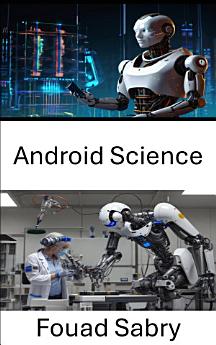Android Science: Advancing Humanlike Intelligence Through Robotic Design
ກ່ຽວກັບປຶ້ມ e-book ນີ້
2: Android (robot): Understand the technical aspects and evolutionary journey of humanoid robots designed to replicate humans.
3: Humanoid Robot: Delve into the unique characteristics and challenges faced by robots designed with humanlike features.
4: Masahiro Mori (roboticist): Learn about the pioneering work of Masahiro Mori and his impact on robotics research.
5: Uncanny Valley: Examine the psychological response to robots that resemble humans but fall short, creating discomfort.
6: Social Robot: Investigate robots designed to interact socially, bridging the gap between humans and machines.
7: David Hanson (robotics designer): Discover David Hanson's role in designing lifelike robots and advancing the field.
8: Developmental Robotics: Focus on how robots learn and adapt over time, mimicking the developmental stages of humans.
9: Actroid: Dive into the Actroid series of robots, known for their realistic appearance and expressions.
10: Social Affordance: Understand how robots can design interactions that encourage human engagement and cooperation.
11: Human–Robot Interaction: Explore the dynamics of how humans and robots communicate and collaborate.
12: Affective Design: Learn how robots are being designed to understand and respond to human emotions.
13: Lucy Suchman: Discover Lucy Suchman’s contribution to understanding the social dynamics of humanrobot interaction.
14: Uncanny: A closer look at the concept of "uncanny" in robotics, and how it impacts human perception.
15: Hiroshi Ishiguro: Study the innovative work of Hiroshi Ishiguro, a leader in creating robots that mirror human behavior.
16: The Media Equation: Understand how humans perceive robots as social actors in media and reallife scenarios.
17: Embodied Cognition: Delve into how the body and the mind work together in the design and interaction of robots.
18: Telenoid R1: Examine the Telenoid R1 robot and its role in emotional and social robotics research.
19: Artificial Empathy: Explore the concept of artificial empathy and how robots might develop the ability to feel and respond.
20: Julie Carpenter: Learn about Julie Carpenter’s research into how humans and robots relate to one another.
21: Robots in Literature: Conclude with a look at the portrayal of robots in literature, highlighting their cultural significance.










